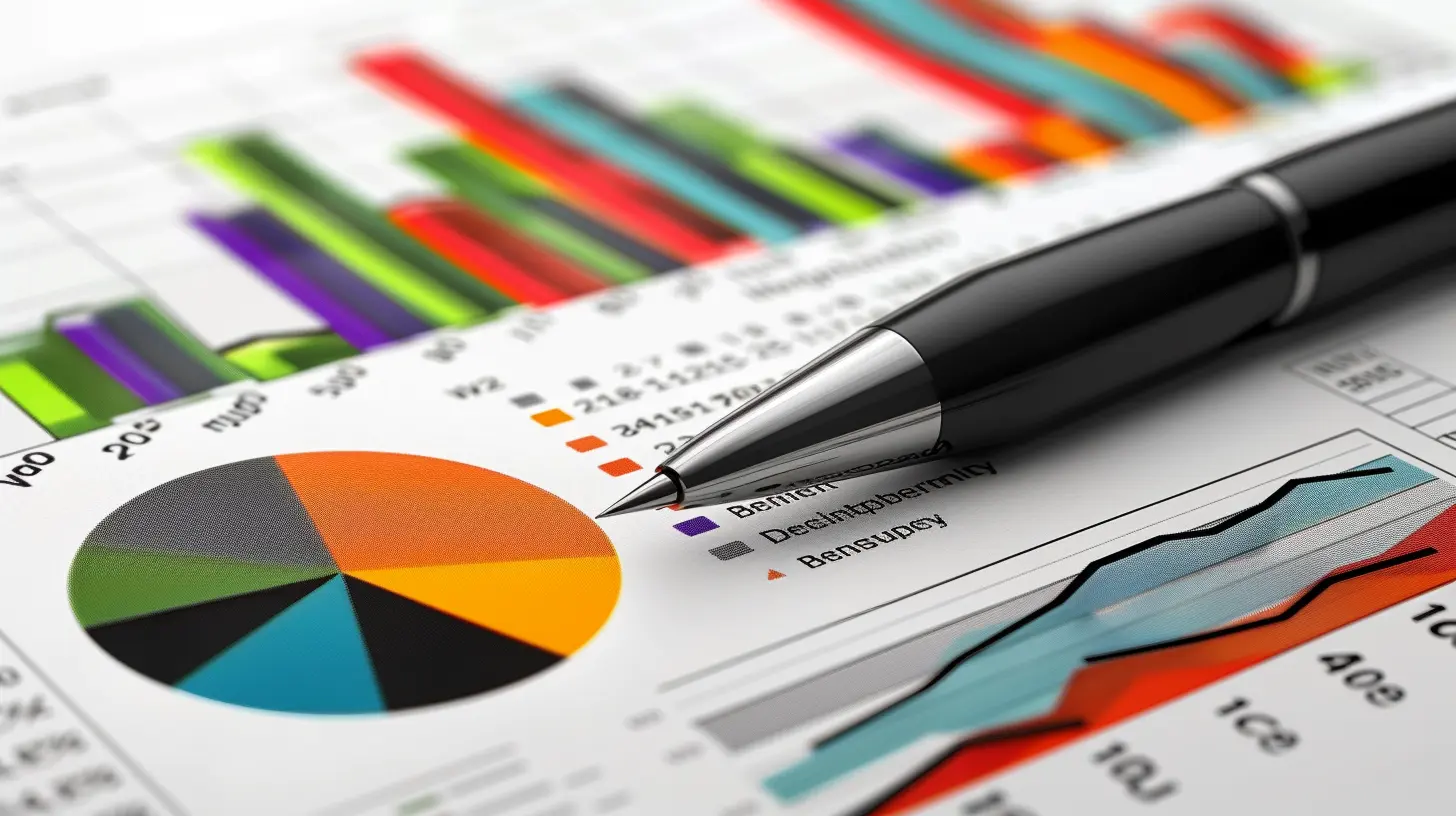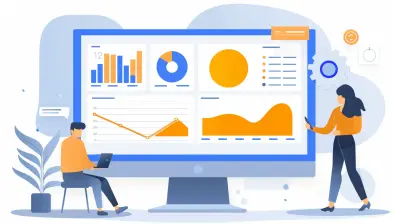10 April 2025
Analytics—it’s one of those buzzwords that gets thrown around a lot these days. Everyone’s talking about how data is the “new oil,” but let’s be real: collecting data is one thing, making sense of it? That’s an entirely different ballgame. If you’ve found yourself scratching your head over predictive and descriptive analytics and wondering which one your business needs, you’re in the right place.
Let’s break it down, simplify the jargon, and figure out which one works best for your goals. Whether you're knee-deep in spreadsheets or just getting started, this guide will help clear the fog.
What is Descriptive Analytics?
Okay, imagine sharing your vacation photos with friends. You’re flipping through pictures, and they ask you, “So what happened here?” That’s essentially descriptive analytics—it’s the process of explaining what happened. It gives you a snapshot of past performance and trends.In the business world, descriptive analytics uses historical data to lay everything out on the table. Think sales reports, customer demographics, website traffic logs—basically, all the “how we’ve been doing so far” stuff.
A Deeper Dive Into Descriptive Analytics
Descriptive analytics is like your business's rearview mirror. It won’t tell you where you're headed, but it will paint a crystal-clear picture of where you’ve been. It’s great for:- Spotting trends: Have you noticed a dip in sales during the summer months? Or maybe your website gets more traffic on weekends?
- Summarizing performance: Tools like dashboards and business intelligence software often rely on descriptive analytics to display key performance indicators (KPIs).
- Understanding customers: What’s the average age of your customer base? How often do they tend to buy from you?
The bottom line? Descriptive analytics is all about organizing and interpreting data from the past to make it easier to comprehend.
What is Predictive Analytics?
Now let’s fast forward a bit. Predictive analytics isn’t about the past—it’s about peering into the crystal ball and forecasting the future. Sounds cool, right? It uses historical data, statistical algorithms, and machine learning to predict what’s likely to happen.It’s like anticipating rain after seeing dark clouds. Predictive analytics helps businesses make informed guesses about outcomes, from projecting future sales to identifying potential customer churn.
The Nuts and Bolts of Predictive Analytics
Think of predictive analytics as your business's fortune teller (but way more reliable and data-driven). Here’s what it can do:- Forecast trends: Want to know how much inventory to stock next month? Predictive analytics can estimate customer demand based on past behavior.
- Manage risks: Credit card companies use predictive analytics to flag potentially fraudulent transactions before they happen.
- Improve personalization: Streaming platforms like Netflix use this to recommend movies based on your watching habits.
Predictive analytics is all about using data as a guide to prepare for what’s next. It’s proactive, forward-thinking, and can give you a competitive edge.
Key Differences Between Predictive and Descriptive Analytics
Alright, so what’s the deal? How are these two approaches different, and why does it even matter? Let’s break it down with a simple analogy:Imagine you’re reading a book. Descriptive analytics summarizes the chapters you’ve already read—it shows you what’s happened so far so you can follow the plot. Predictive analytics, on the other hand, takes a wild guess at what’s going to happen in the next chapter based on the story so far.
Here’s a quick side-by-side comparison:
| Feature | Descriptive Analytics | Predictive Analytics |
|----------------------------|--------------------------------------------|--------------------------------------------|
| Focus | Past performance | Future outcomes |
| Questions it answers | What happened? | What’s likely to happen? |
| Goal | Understanding trends and patterns | Making predictions and proactive decisions |
| Tools/Methods | Dashboards, reports, data visualization | Machine learning, predictive modeling |
| Complexity | Relatively simple | More advanced |
Still with me? Good. Let’s dive into why choosing the right analytics approach matters for your business.
How to Choose the Right Approach for Your Business
So, you’ve got two fancy-sounding analytics options on the table. How do you pick between them? Simple: it all boils down to your goals, resources, and stage of growth.Step 1: Identify Your Business Goals
Ask yourself, what’s the problem you’re trying to solve?- If you want to figure out why sales spiked last quarter, descriptive analytics is the way to go.
- If you’re trying to predict how much revenue you’ll generate next quarter, predictive analytics is your best bet.
Having a clear goal will help you choose the right tool for the job.
Step 2: Assess Your Data
You can’t bake a cake without ingredients, and you definitely can’t analyze anything without data. Strong predictive models rely on high-quality historical data. If your data is messy, incomplete, or inconsistent, predictive analytics could give you poor results.Descriptive analytics, on the other hand, is more forgiving when it comes to data quality. Start with what you have and refine it over time.
Step 3: Understand Your Resources
Let’s not sugarcoat it—predictive analytics requires more investment. Between hiring a data scientist and buying fancy software, costs can add up.Descriptive analytics is generally cheaper and easier to implement. It’s a great starting point for businesses that are new to data analysis or smaller in size.
Step 4: Combine Both Approaches
Here’s a secret: you don’t always have to choose between the two. Many businesses use both predictive and descriptive analytics to create a more complete picture. Think of them as peanut butter and jelly—they’re great individually, but together? They’re magic.Real-World Applications of Descriptive and Predictive Analytics
Let’s put theory into action. Here are a few examples of how businesses use both types of analytics:- Retail: A clothing company uses descriptive analytics to identify their top-selling items last season. Then, they use predictive analytics to forecast inventory needs for the upcoming season.
- Healthcare: Hospitals use descriptive analytics to track patient admission rates. Meanwhile, predictive analytics helps them anticipate potential disease outbreaks or staff shortages.
- Marketing: An e-commerce brand looks at past email open rates using descriptive analytics. Predictive analytics then helps them determine the best times to send future campaigns.
Challenges and Limitations
No tool is perfect, and analytics is no exception. Descriptive analytics might leave you stuck in the past if you rely on it too much. On the flip side, predictive analytics can misfire if your data isn’t clean or your assumptions are off.The trick? Be aware of these limitations and always use analytics as a guide—not the gospel truth.
Final Thoughts: Picking the Right Approach for You
At the end of the day, the choice between predictive and descriptive analytics comes down to what you’re trying to achieve. Both approaches have their strengths, and when used together, they can give you powerful insights to elevate your business.So, what’s it going to be? Are you ready to dig into past data to unearth patterns, or are you eager to take a peek at what the future holds? The decision is yours—but one thing’s for sure: with the right analytics strategy, your business will be better prepared to tackle challenges and seize opportunities.






Damon McMillan
Great insights on predictive and descriptive analytics! This article provides valuable guidance for businesses navigating their data strategies. Understanding these approaches is essential for making informed decisions and driving success. Keep up the excellent work!
April 19, 2025 at 3:28 AM